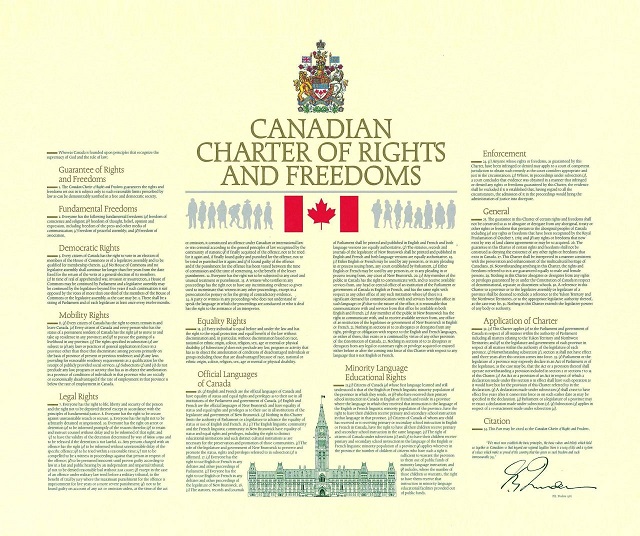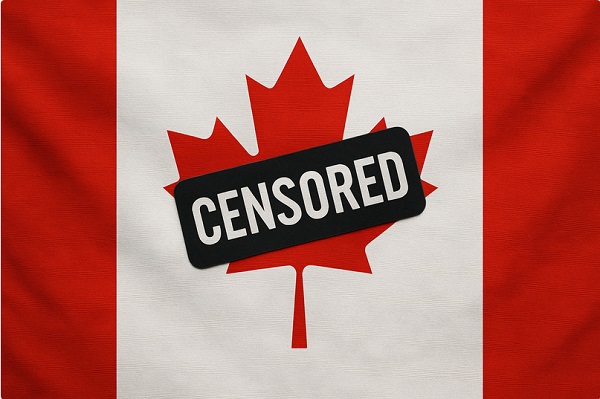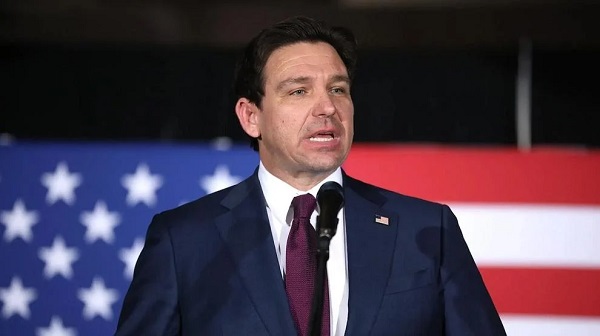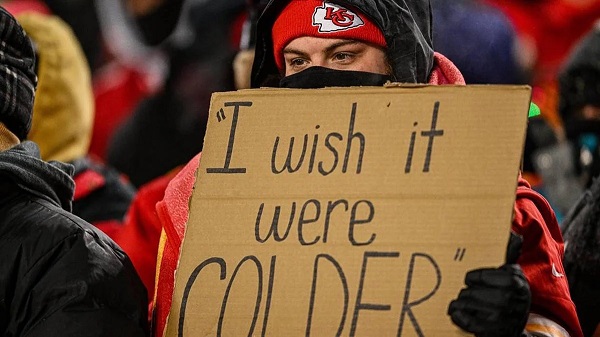Frontier Centre for Public Policy
Canada’s elites suppress freedom of speech on indigenous matters

From the Frontier Centre for Public Policy
By Peter Best
Under section 2 of the Charter of Rights and Freedoms, Canadians are guaranteed freedom of thought, belief, and expression. These freedoms are fundamental in our democratic society. In fact, an official government commentary on the Charter states: “In a democracy, people must be free to discuss matters of public policy, criticize governments and offer their own solutions to social problems.”
Given this claim, it is, indeed, a mystery why free speech is protected when people say that Israel’s policies and practices towards the Palestinians are “racist,” but not when they say that Canada’s policies and practices towards Indigenous peoples are “racist.”
When it comes to Indigenous issues, our academic, media, and political elites have a Charter of Rights free speech blind spot. They refuse to allow contrary minded, but enlightened Nelson Mandela-like beliefs to be voiced unless those people want to be labeled as “racist.” Only a few brave souls have been willing to be pillarized by transgressing this “sacred” boundary.
This writer went over this line when he arranged a Chapters book-signing for There Is No Difference, a book that advocates for the greater integration of Indigenous people into Canadian society, only to have the event cancelled by the bookstore who chose silence over free speech. Surprisingly, only one mainstream journalist, Barbara Kay in The National Post, defended my free speech rights.
But I am not alone.
A few years ago, Senator Lynn Beyak dared to say that some good came from residential schools, a view that is, in fact, reflected in the Truth and Reconciliation (TRC) Report, and was shared by eminent Indigenous author and residential school student Basil Johnston in his book, Indian School Days.
For making defensible assertions, Senator Beyak was excoriated by politicians from all parties, and mocked by editorial writers as an ignorant rube. In 2019, she was kicked out of the Conservative caucus, and shortly after she resigned from the Senate.
Associate Professor Frances Widdowson was exercising her “academic freedom,” but, nevertheless, was fired from Mount Royal University in 2021 for challenging the Indigenous status quo. In doing so, the university proved that its core mission was to protect the feelings of Indigenous people and not to challenge fallacies and uphold truth-seeking in a free and open debate.
The same year, an Abbotsford B.C. high school teacher, Jim McMurtry, was fired for saying that most Indigenous children who died in residential schools died because of diseases like influenza and tuberculosis. Even though this fact is reported in the TRC Report, it did not save Mr. McMurtry from unceremonially losing his teaching career.
In 2024, the mayor of Quesnel B.C., Ron Paull, was censured and the nearby First Nations bands boycoted him because his wife — a private citizen in her own right — handed out copies of Grave Error to friends and acquaintances. This book is a scholarly challenge to the “cultural genocide” claimed by the Kamloops Indigenous band.
Also, in 2024, a Manitoba school trustee, Paul Coffey, faced pressure to resign for publicly echoing what Senator Beyak had said a few years earlier.
These cases — and many others — clearly illustrate that no government official, no member of a provincial or territorial legislature, and few mainstream academics and journalists will defend contrary-minded “heretics” exercising their right to free speech, a right that is enshrined in the Canadian Charter of Rights and Freedoms.
In fact, few mainstream news media outlets reported on these stories in a dispassionate and professional way. The CBC, for example, consistently emphasizes the “hurt feelings of the aggrieved,” making their outrage the focus of their reporting. In no media reports has the CBC mentioned the Charter of Rights and Freedoms, implying that Charter protected freedom of speech is no longer relevant in their reporting on Indigenous matters.
Hurt feelings, of course, are irrelevant to academics and journalists because the search for truth always involves controversies that hurt the feelings of some people.
Even more outrageous, the federal government has actively demonized Canadians who challenge misinformation about Indigenous people by proposing to make it a crime for people to engage in what it calls “residential school denialism.” As a result, people who care about the best interests of Indigenous peoples but have contrary-minded views, are afraid to speak up for fear of being called “denialists,” as if they were denying the European Holocaust.
Nevertheless, many Canadians believe that the proper way to advance reconciliation with Indigenous people is to phase out the dependency relationship that has grown since the Indian Act was enacted in 1876. Many also think that Indigenous peoples should be equal with other Canadians—no better, and certainly no worse.
Some Canadians even believe that Canadian governments should not support the United Nations Declaration on the Rights of Indigenous People (UNDRIP) that creates a strong “consult and accommodate” hammerlock on the development of Canadian resources. Similarly, many believe that the “nation to nation” relationship is polarizing citizens leading to ruinous economic and social policies for both Indigenous bands and Canadian society.
Unfortunately, the vast majority of Canadians realize that it is best to keep thoughts like these ones to themselves.
Our elites have breached their fiduciary responsibilities to Canadians. It is a tragedy that they do not encourage other viewpoints. In this respect, Peter Wehner correctly says: “The truths to be discovered are complex and many-sided, and the only way to get to them is by engaging with contrary ideas in a manner approaching dialogue.”
It would be in the best interest of Canadians, if our elites shed their hostility towards those who disagree with them. But to do this, they need to develop the confidence and open-mindedness that the French philosopher Montaigne implied when he wrote: “When I am contradicted it arouses my attention, not my wrath. I move towards the man who contradicts me; he is instructing me. The cause of truth ought to be common to both of us.”
But in discussing Canadian Indigenous issues, the Canadian elites are inexplicably unwilling to grant to others the same Charter of Rights-free speech presumptions that they keep for themselves when they support “anti-Zionists” shouting obnoxious statements and insults. When they do this, they are dividing Canadians, losing our trust, and increasing the grave harm to all Canadians but especially to Indigenous Canadians.
Peter Best is a retired lawyer in Sudbury and the author of There is no Difference which argues that Canada’s laws should be changed to make all Canadians equal under the law, regardless of race.
armed forces
Ottawa’s Newly Released Defence Plan Crosses a Dangerous Line

From the Frontier Centre for Public Policy
By David Redman
Canada’s Defence Mobilization Plan blurs legal lines, endangers untrained civil servants, and bypasses provinces. The Plan raises serious questions about military overreach, readiness, and political motives behind rushed federal emergency planning.
The new defence plan looks simple on paper. The risks are anything but.
Canadians have grown used to bad news about the Canadian Armed Forces (CAF), but the newly revealed defence mobilization plan is in a category of its own.
After years of controversy over capability, morale, and leadership challenges, the military’s senior ranks now appear willing to back a plan that misunderstands emergency law, sidelines provincial authority, and proposes to place untrained civil servants in harm’s way.
The document is a Defence Mobilization Plan (DMP), normally an internal framework outlining how the military would expand or organize its forces in a major crisis.
The nine-page plan was dated May 30, 2025, but only reached public view when media outlets reported on it. One article reports that the plan would create a supplementary force made up of volunteer public servants from federal and provincial governments. Those who join this civil defence corps would face less restrictive age limits, lower fitness requirements, and only five days of training per year. In that time, volunteers would be expected to learn skills such as shooting, tactical movement, communicating, driving a truck, and flying a drone. They would receive medical coverage during training but not pensionable benefits.
The DMP was circulated to 20 senior commanders and admirals, including leaders at NORAD, NATO, special forces, and Cybercom. The lack of recorded objection can reasonably raise concerns about how thoroughly its implications were reviewed.
The legal context explains much of the reaction. The Emergencies Act places responsibility for public welfare and public order emergencies on the provinces and territories unless they request federal help. Emergency response is primarily a provincial role because provinces oversee policing, natural disaster management, and most front-line public services. Yet the DMP document seems to assume federal and military control in situations where the law does not allow it. That is a clear break from how the military is expected to operate.
The Emergency Management Act reinforces that civilian agencies lead domestic emergencies and the military is a force of last resort. Under the law, this means the CAF is deployed only after provincial and local systems have been exhausted or cannot respond. The Defence Mobilization Plan, however, presents the military as a routine responder, which does not match the legal structure that sets out federal and provincial roles.
Premiers have often turned to the military first during floods and fires, but those political habits do not remove the responsibility of senior military leaders to work within the law and respect their mandate.
Capacity is another issue. Combat-capable personnel take years to train, and the institution is already well below its authorized strength. Any task that diverts resources from readiness weakens national defence, yet the DMP proposes to assign the military new responsibilities and add a civilian component to meet them.
The suggestion that the military and its proposed civilian force should routinely respond to climate-related events is hard to square with the CAF’s defined role. It raises the question of whether this reflects policy misjudgment or an effort to apply military tools to problems that are normally handled by civilian systems.
The plan also treats hazards unrelated to warfighting as if the military is responsible for them. Every province and territory already has an emergency management organization that monitors hazards, coordinates responses and manages recovery. These systems use federal support when required, but the military becomes involved only when they are overwhelmed. If Canada wants to revive a 1950s-style civil defence model, major legislative changes would be needed. The document proceeds as if no such changes are required.
The DMP’s training assumptions deepen the concerns. Suggesting that tasks such as “shooting, moving, communicating, driving a truck and flying a drone” can be taught in a single five-day block does not reflect the standards of any modern military. These skills take time to learn and years to master.
The plan also appears aligned with the government’s desire to show quick progress toward NATO’s defence spending benchmark of two percent of GDP and eventually five percent. Its structure could allow civil servants’ pay and allowances to be counted toward defence spending.
Any civil servant who joins this proposed force would be placed in potentially hazardous situations with minimal training. For many Canadians, that level of risk will seem unreasonable.
The fact that the DMP circulated through senior military leadership without signs of resistance raises concerns about accountability at the highest levels. That the chief of the defence staff reconsidered the plan only after public criticism reinforces those concerns.
The Defence Mobilization Plan risks placing civil servants in danger through a structure that appears poorly conceived and operationally weak. The consequences for public trust and institutional credibility are becoming difficult to ignore.
David Redman had a distinguished military career before becoming the head of the Alberta Emergency Management Agency in 2004. He led the team in developing the 2005 Provincial Pandemic Influenza Plan. He retired in 2013. He writes here for the Frontier Centre for Public Policy.
Censorship Industrial Complex
Ottawa’s New Hate Law Goes Too Far

From the Frontier Centre for Public Policy
By Lee Harding
Ottawa says Bill C-9 fights hate. Critics say it turns ordinary disagreement into a potential crime.
Discriminatory hate is not a good thing. Neither, however, is the latest bill by the federal Liberal government meant to fight it. Civil liberties organizations and conservative commentators warn that Bill C-9 could do more to chill legitimate speech than curb actual hate.
Bill C-9 creates a new offence allowing up to life imprisonment for acts motivated by hatred against identifiable groups. It also creates new crimes for intimidation or obstruction near places of worship or community buildings used by identifiable groups. The bill adds a new hate propaganda offence for displaying terrorism or hate symbols.
The Canadian Civil Liberties Association (CCLA) warns the legislation “risks criminalizing some forms of protected speech and peaceful protest—two cornerstones of a free and democratic society—around tens of thousands of community gathering spaces in Canada.” The CCLA sees no need to add to existing hate laws.
Bill C-9 also removes the requirement that the Attorney General consent to lay charges for existing hate propaganda offences. The Canadian Constitution Foundation (CCF) calls this a major flaw, noting it removes “an important safeguard for freedom of expression that has been part of Canada’s law for decades.” Without that safeguard, decisions to prosecute may depend more on local political pressures and less on consistent national standards.
Strange as it sounds, hatred just will not be what it used to be if this legislation passes. The core problem begins with how the bill redefines the term itself.
Previously, the Supreme Court of Canada said hatred requires “extreme manifestations” of detestation or vilification that involve destruction, abhorrence or portraying groups as subhuman or innately evil. Instead, Bill C-9 defines hatred as “detestation or vilification,” stronger than “disdain or dislike.” That is a notably lower threshold. This shift means that ordinary political disagreement or sharp criticism could now be treated as criminal hatred, putting a wide range of protected expression at real risk.
The bill also punishes a hateful motivation more than the underlying crime. For example, if a criminal conviction prompted a sentence of two years to less than five years, a hateful motivation would add as much as an additional five years of jail time.
On paper, most Canadians may assume they will never be affected by these offences. In practice, the definition of “hate” is already stretched far beyond genuine threats or violence.
Two years ago, the 1 Million March for Children took place across Canada to protest the teaching of transgender concepts to schoolchildren, especially the very young. Although such opposition is a valid position, unions, LGBT advocates and even Newfoundland and Labrador Conservatives adopted the “No Space For Hate” slogan in response to the march. That label now gets applied far beyond real extremism.
Public pressure also shapes how police respond to protests. If citizens with traditional values protest a drag queen story hour near a public library, attendees may demand that police lay charges and accuse officers of implicit hatred if they refuse. The practical result is clear: officers may feel institutional pressure to lay charges to avoid being accused of bias, regardless of whether any genuine threat or harm occurred.
Police, some of whom take part in Pride week or work in stations decorated with rainbow colours in June, may be wary of appearing insensitive or intolerant. There have also been cases where residents involved in home invasion incidents were charged, and courts later determined whether excessive force was used. In a similar way, officers may lay charges first and allow the courts to sort out whether a protest crossed a line. Identity-related considerations are included in many workplace “sensitivity training” programs, and these broader cultural trends may influence how such situations are viewed. In practice, this could mean that protests viewed as ideologically unfashionable face a higher risk of criminal sanction than those aligned with current political priorities.
If a demonstrator is charged and convicted for hate, the Liberal government could present the prosecution as a matter for the justice system rather than political discretion. It may say, “It was never our choice to charge or convict these people. The system is doing its job. We must fight hate everywhere.”
Provincial governments that support prosecution will be shielded by the inability to show discretion, while those that would prefer to let matters drop will be unable to intervene. Either way, the bill could increase tensions between Ottawa and the provinces. This could effectively centralize political authority over hate-related prosecutions in Ottawa, regardless of regional differences in values or enforcement priorities.
The bill also raises concerns about how symbols are interpreted. While most Canadians would associate the term “hate symbol” with a swastika, some have linked Canada’s former flag to extremism. The Canadian Anti-Hate Network did so in 2022 in an educational resource entitled “Confronting and preventing hate in Canadian schools.”
The flag, last used nationally in 1965, was listed under “hate-promoting symbols” for its alleged use by the “alt-right/Canada First movement” to recall when Canada was predominantly white. “Its usage in modern times is an indicator of hate-promoting beliefs,” the resource insisted. If a historic Canadian symbol can be reclassified this easily, it shows how subjective and unstable the definition of a “hate symbol” could become under this bill.
These trends suggest the legislation jeopardizes not only symbols associated with Canada’s past, but also the values that supported open debate and free expression. Taken together, these changes do not merely target hateful behaviour. They create a legal framework that can be stretched to police dissent and suppress unpopular viewpoints. Rest in peace, free speech.
Lee Harding is a research fellow for the Frontier Centre for Public Policy.
-

 Great Reset2 days ago
Great Reset2 days agoViral TikTok video shows 7-year-old cuddling great-grandfather before he’s euthanized
-

 Daily Caller2 days ago
Daily Caller2 days agoChinese Billionaire Tried To Build US-Born Baby Empire As Overseas Elites Turn To American Surrogates
-

 Alberta2 days ago
Alberta2 days agoSchools should go back to basics to mitigate effects of AI
-

 International2 days ago
International2 days agoAt Least 15 Killed In Shooting Targeting Jewish Community At Australia’s Bondi Beach, Police Say
-

 International2 days ago
International2 days agoTwo states designate Muslim group as terrorist
-

 Business2 days ago
Business2 days agoMajor tax changes in 2026: Report
-

 Digital ID1 day ago
Digital ID1 day agoCanada releases new digital ID app for personal documents despite privacy concerns
-

 Bruce Dowbiggin1 day ago
Bruce Dowbiggin1 day agoNFL Ice Bowls Turn Down The Thermostat on Climate Change Hysteria






